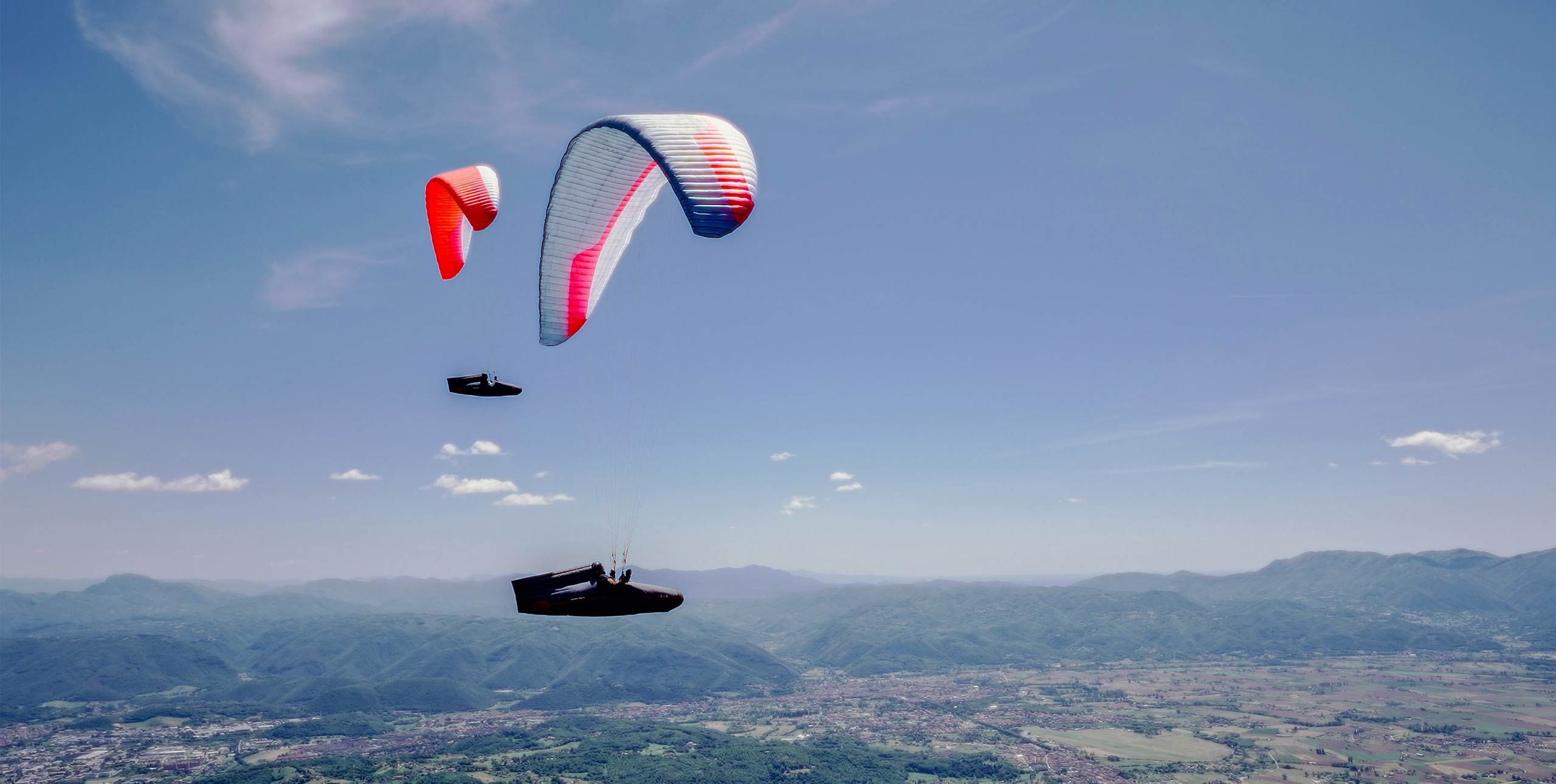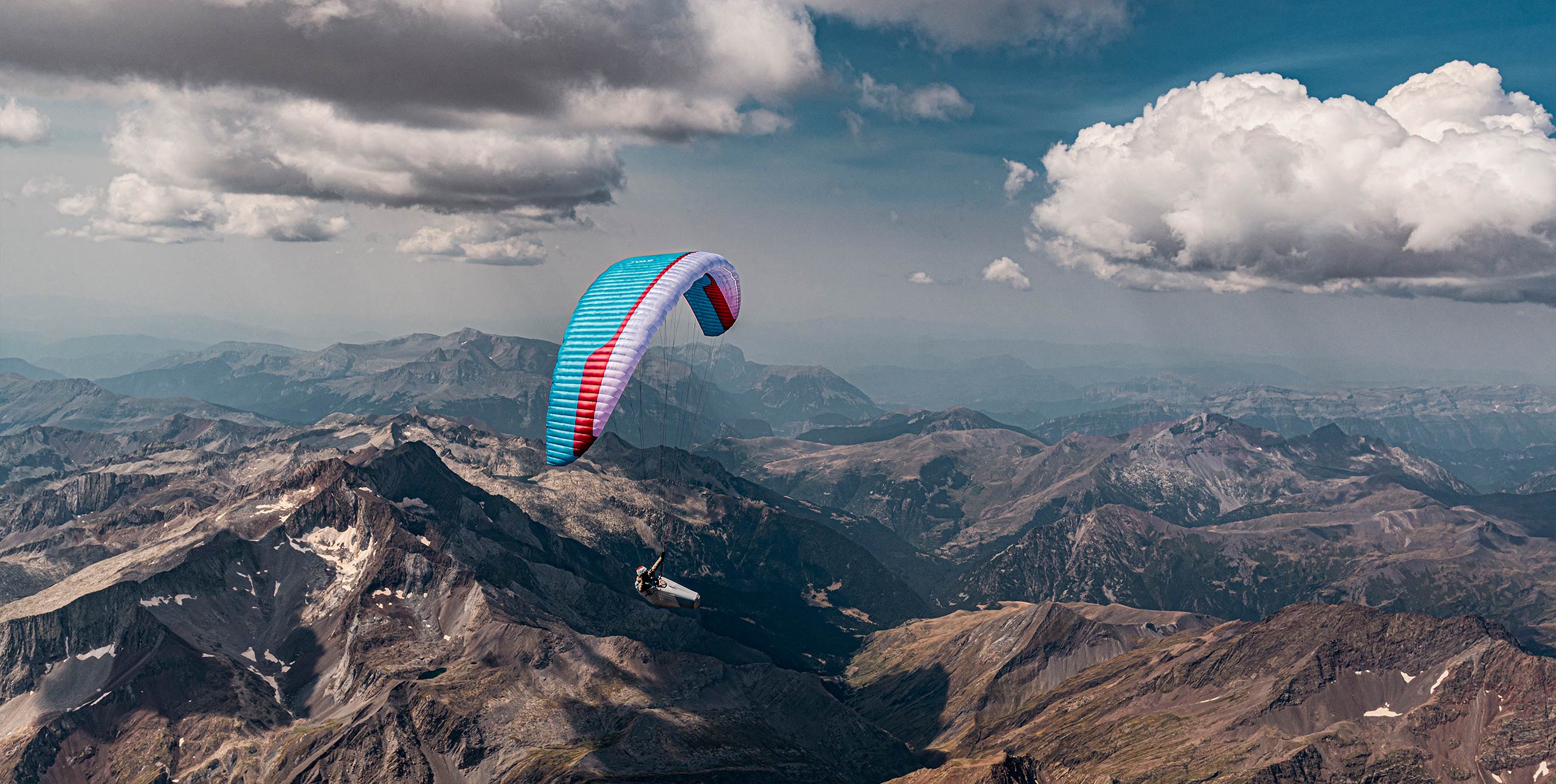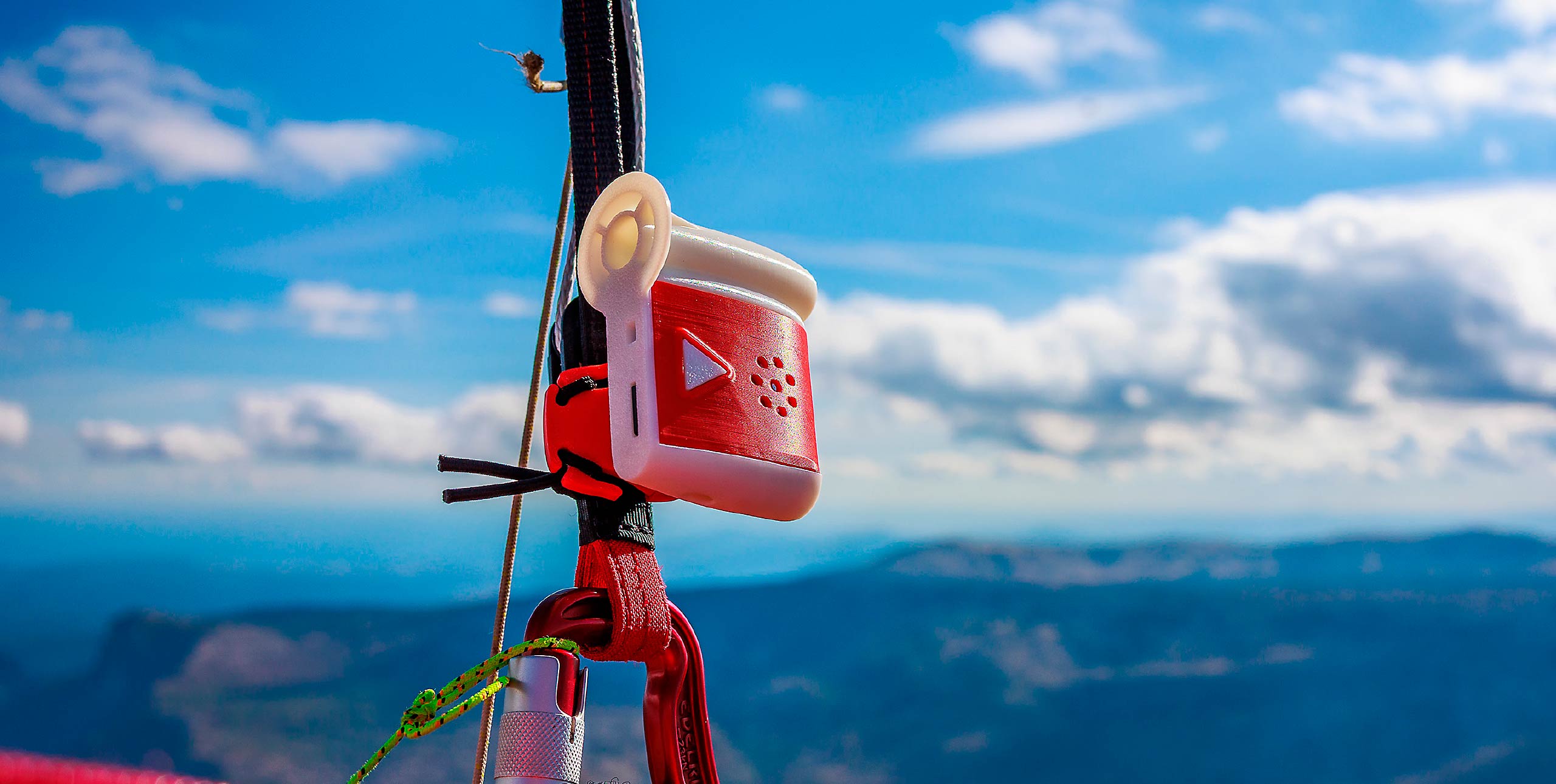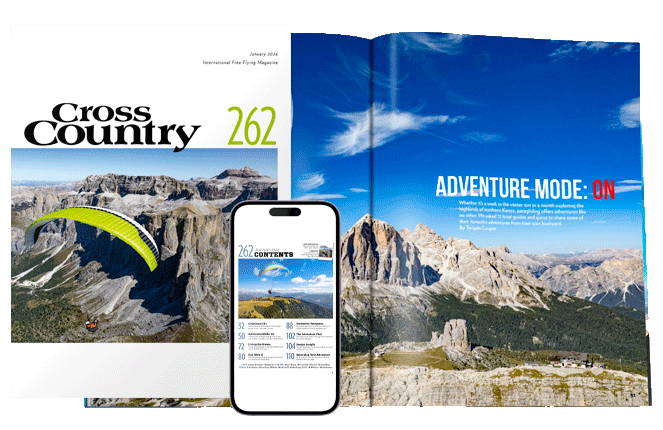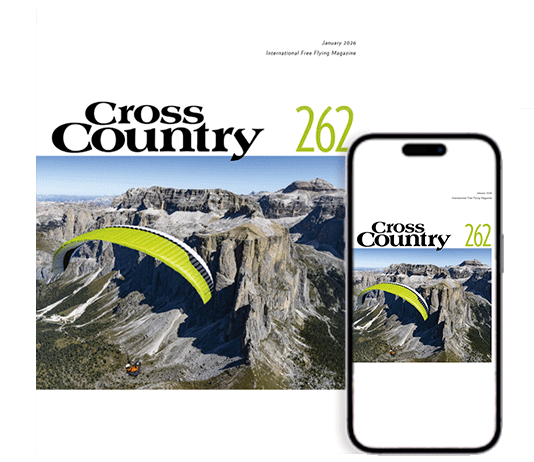
With an aspect ratio of 6.44 and 71 cells, Gin’s latest cross-country machine the EN-C Bonanza 2 looks racy. Lawrie Noctor takes it out to see how it performs.
I always love flying new gliders, especially EN-C wings as I think the blend of performance and safety just hits the sweet spot. So when asked to fly and review the new Gin Bonanza 2, I couldn’t wait to get back in the saddle of a sports class wing.
Before we crack on though let’s do the usual specs readout, just in case some of you haven’t already seen them. As mentioned, the glider is EN C with a relatively high aspect ratio of 6.44 flat. This puts it at the higher end of what’s available in its class with only the AirDesign Volt 3 and BGD Cure having a higher aspect ratio (that I know of).
Now, the reason I’ve highlighted the aspect ratio first is because this, at least for me, is the starting point to comparisons. Yes, there are a lot of other factors that govern a wing’s performance and handling, like number of cells, line plan and total length. But changing aspect ratio is the first thing you can do to improve a glider’s sink rate and glide angle, so this is where I look.
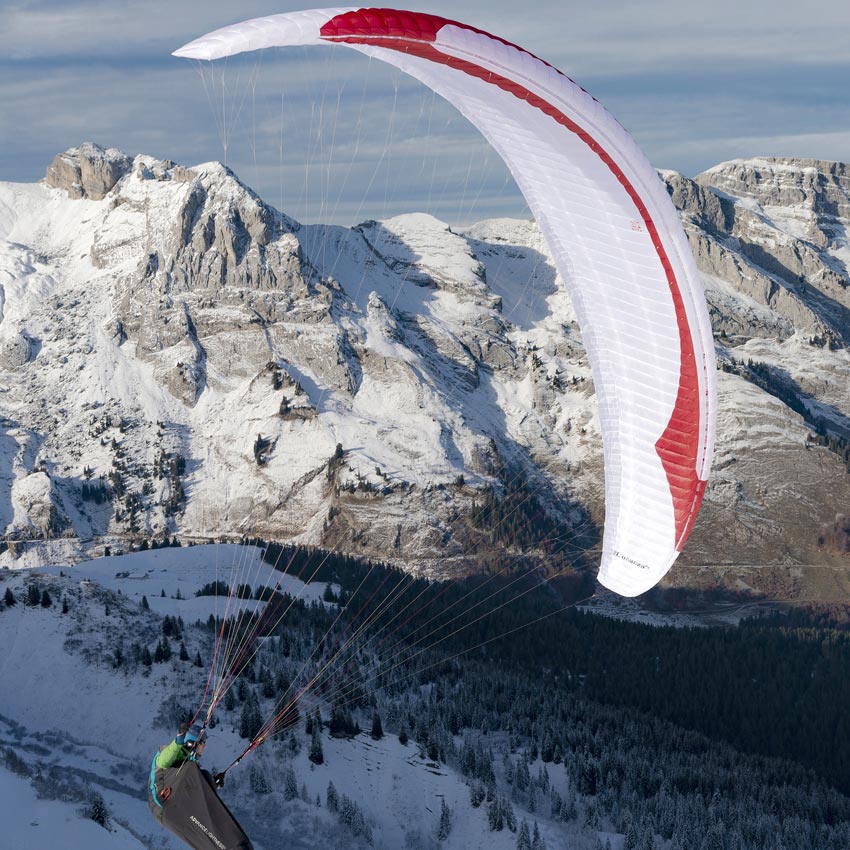
Design and build
I test flew the small glider, which has a weight range of 75-95kg. The wing weighed 5.15kg, which puts it in the mid-higher end of EN-C gliders in terms of weight. My all-up-flying weight for testing was at the top end.
All lines are unsheathed apart from the lower brake fan. The upper surface leading edge is Porcher Skytex 38g/m², while the lower/upper main surface is Skytex 32g/m².
The glider has a well-pronounced sharknose leading edge along with all your other nice usual trimmings like mini-ribs on the trailing edge, Harken pulleys for the speed system and upper brake fan with gathering (reefing) for the brakes.
What’s not so “usual”, but getting more common on three-line gliders, is the smart riser system for rear-riser steering. In the air this felt really natural and very effective but we’ll come onto that in more detail shortly.
Risers are skinny but very neat and the lines are fairly easy to find with colour-coded bottom sheathed sections. The lower sections of the brake-lines are sheathed in a bright orange colour, so are hard to miss. The brakes have magnetic poppers, which I like, although these could do with a little more strength as I found mine occasionally popping off (not the end of the world).
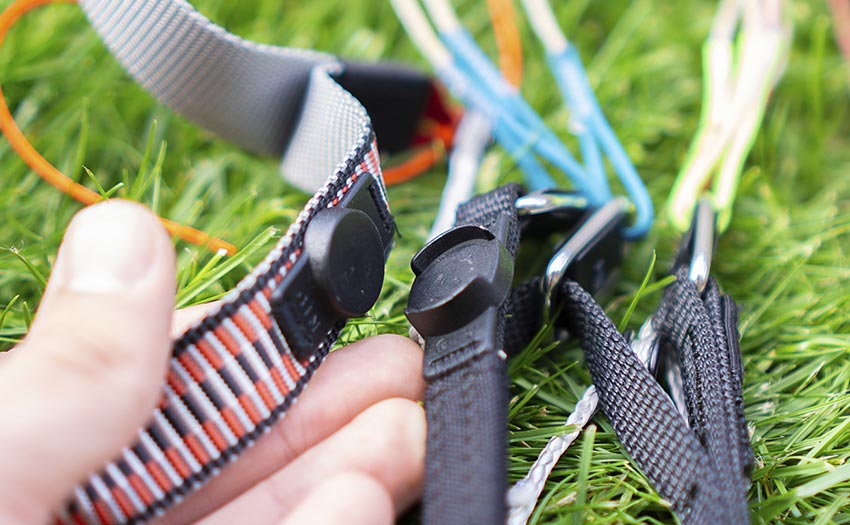
On launch
Getting the glider out of the bag for the first time, quality is seen and felt from the risers to the wing itself. Actually, before even getting the glider out of the concertina pack you can see the pack itself is made with attention to detail. It has a special zipped section for risers and an inner sleeve, which means it’s much harder to accidentally catch the glider material itself when zipping it up. Small details, but things like this make a difference.
Launching the glider doesn’t require any particular special techniques in either strong wind or light winds, but I did find that in the stronger stuff it required a very small amount of brake to stop it flying too far over your head. It didn’t shoot, but it felt like it needed a touch. In the stronger-wind launches, it also had a good amount of slow-speed control, so you could have your hands quite deep on the brakes when you needed the extra drag/sink rate not to be airborne.
In the air
Gin’s Idris Birch told me that they had carefully selected the aerofoils for the centre and the tip of the Bonanza, and once airborne I could definitely feel this. The glider felt compact throughout the central two-thirds of the span (at trim speed), with the tips feeling slightly lighter giving you some good feedback for when you’re grovelling low on those weak days.
Even though I was at the top of the weight range on the small (95kg) it still climbed nicely and certainly didn’t feel out of pace when climbing with the M6, Cure, Sigma 10 and so on. In fact, seeing as I was on one of the smaller sizes and highly loaded compared to the above gliders, I would say it seemed to climb really well.
The brake pressure is fairly linear throughout the range, however the brake length is on the longer side for what I like so I found myself taking half a wrap to have my hands in a comfortable position.
The wing is nice and reactive to brake/weightshift inputs and when thermalling, and if you need to tighten up on smaller cores this was quite easy to do. To get the glider to roll in more I found I had to give it a bit more weightshift as it seemed quite flat on the brakes alone. I wouldn’t say in general it was a “rolly” glider, but when you want it to be, it can be.
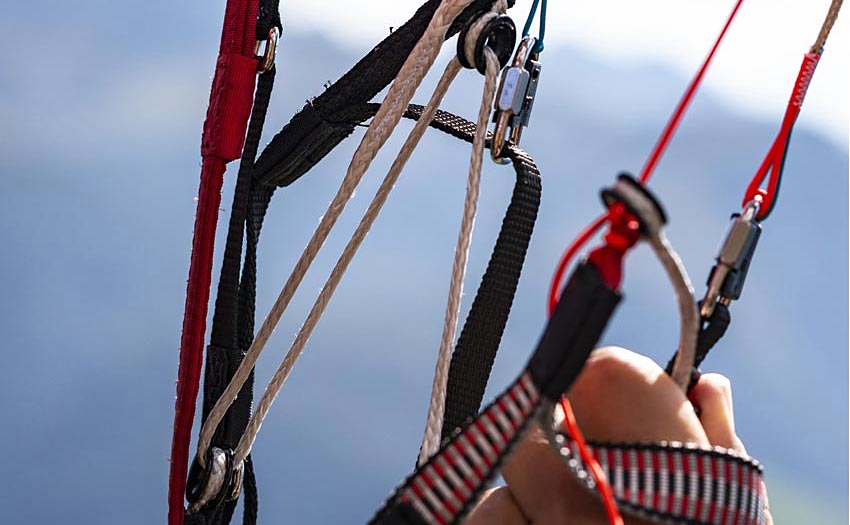
On glide
On glide, the feedback from the tips can almost be switched off by applying speed bar. The feedback then comes through the risers instead, into the harness. I really like this.
In fact, the glider felt better and better the more speed bar you applied. At full speed the whole span tightens and feels more compact, kind of like a chameleon changing colours to suit its environments. When flying slow the glider gives you feedback and the flex you need, and when flying fast it tightens and feels more efficient. The rear-riser steering is also enjoyable and uncomplicated to use and my hands naturally wanted to sit right in this position.
The wing seemed to tolerate quite a lot of turbulence on bar before showing any signs of collapse, and this of course reduced when using the rear-riser steering. When compared to a medium/large Alpina 3 at the top of the weight range the Bonanza 2 had comparable glide, but slightly faster top end. Getting to this speed is also fairly easy, with light to moderate pressure on the speed bar.
At the other end of the speed range, the glider tolerated a lot more brake travel than I was expecting before showing signs of a spin. In fact, with about 50% brake applied (with half wrap) on both sides and pushing through on one side, my hand needed to be held at just above seatplate height for around two seconds before it span. Nice, especially for a glider with 6.44 aspect ratio!
Descent technique like big ears and spiral dives were both easy to initiate. Big ears folded in nicely using the outer-A but would occasionally stick a little; nothing a little sharp pump couldn’t sort.
Spiral dive exits and big pitches did require a small amount of management to stop any folds in the canopy, however nothing crazy that would take an EN-C pilot by surprise.
Because of this good pitch stability/efficiency and rear-riser steering it gave me the confidence to play with speed bar on landing, coming in with extra speed and slowly bleeding it off to an easy flare. Lots of fun. It’s always good when a glider puts a smile on your face.
Conclusion
Overall I would call this a great cross-country wing. It wants to fly fast and when it does, it’s easy to control and is pretty efficient. I like the feedback the glider gives at slower speeds, but this does need to be managed, so it’s probably better for more competent EN-B pilots if they are looking to step up. Pilots looking to step down to this glider from flying higher-aspect wings will feel right at home and appreciate the slow and fast characteristics of the wing. My final thought is it would be great to see a lighter version of this for vol-biv type flying.
Q&A WITH MICHAEL SIGEL
It really feels like a well coordinated XC wing. We found it likes to be flown on full bar, but also that at the other end of the spectrum there is a lot of travel in the brakes. You can slow it down, without fear of spinning or stalling. How do you manage that mix?
Yes, since we introduced the EPT (Equalised pressure technology) profile in the first Altas, we changed it and made it better and better. Already with the Carrera we were happy with the behaviour at minimum speed. This found its peak now with the Bonanza 2. The round nose keeps the airflow on the profile, while the EPT keeps the pressure high, even at high angles of attack.
The aspect ratio is quite high for the class, at 6.44. That might put some people off – they might think it means the glider is too much of a handful to manage. In general, what is Gin’s philosophy about A/R, and is it something you have deliberately done, to place the wing at the top end of the C class with respect to A/R?
Well, Gin always liked performance and speed. Especially with the Carrera and then also with the Explorer we were able to collect a lot of experience with gliders with high aspect ratio in lower EN classes. An important consideration is sail tensioning, which seems to have a bigger influence on flight behaviour than just the AR.
The rear-riser steering is effective, it’s not just for show or fashion. Can you tell us a little bit about how it all works? What should pilots know about it to help them achieve the wing’s full potential?
If you have ever tried a two-liner you don’t like to fly without rear risers anymore. However, if you just pull on the C-risers, first the control is not the best and secondly the performance gets worse, as the profile is changed. That’s why we came up with the idea of the smart riser, which also affects the B-riser when you pull the rear riser. Like this the profile keeps its shape and you have 100% control. If someone does not like it or thinks the riser gets too complicated, it is very easy to detach this line. We think that rear-riser control is something a pilot should use nowadays. I can only recommend it, as it gives real benefits in flying. Of course when it gets too turbulent, you should control the glider with the brakes.
Have you had to make any compromises to the wing for certification? Are there things you’d like to have seen but can’t do because of the certification system?
Actually no! We were super surprised how smoothly certification went, especially as the glider is really fast!
What advice would you give pilots coming to the Bonanza 2 as their first EN-C wing? How do they get the most out of their glider?
Well, it depends which glider they step up from. If they are coming from a low B, then the step is quite big. If they are coming from a high B, the gap is not that big. But either way, they should get used to the glider in easy conditions and try to get familiar with the wing. It is always better to fly a new glider in easy conditions and get used to it before you go to big air! I think the real advantage of high performance gliders lies in speed. That means if you buy a C-glider and you never use the speed bar, you are on the wrong glider. That’s why I think pilots should use the potential of the glider, which is when you push the speed bar and when you control the glider with the rear risers.
Our reviewer suggested a lightweight vol-biv version would be nice. Anything on the horizon?
Ha ha, a light version might be closer than you think!
Published in Cross Country issue 203, September 2019.
MANUFACTURER’S SPECIFICATIONS
Gin say: “A high performance sports class wing for XC pilots who appreciate both ease and performance.”
Use: XC
Pilot level: XC pilots
Sizes (area m2): 19.4, 20.7, 22.6, 24.5, 26.5, 28.6
Certified take-off weight (kg): 60-75, 65-85, 75-95, 85-105, 95-115, 105-130
Glider weight (kg): 4.5, 4.65, 5.15, 5.3, 5.7, 5.95
Cells: 71
Flat aspect ratio: 6.44
Certification: EN C
Reviewer: Lawrie Noctor has been flying since 2009 and is a qualified paragliding and paramotoring instructor as well as competition and XC pilot. Equally at home flying the latest CCC glider or an EN B, his favourite locations to fly are the Peak District, St André in France and Kruševo.


